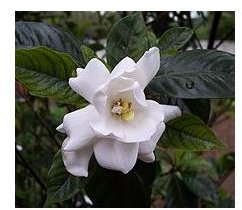Gardenia Essential Oil: Learn the Basics About Gardenia Essential Oil and Its Uses
Gardenia Essential Oil
While some essential oils are commonly used in Western medicine, there are many, many more that are still uncommon in our culture.
One of these is Gardenia essential oil. Essential oils have been used for thousands of years for their healing properties in many cultures. They are normally inhaled in some way or applied topically but never taken internally.
Gardenia is a type of evergreen shrub or small tree that is a part of the Rubiaceae botanical family. It grows to about two to five feet high. The plant has glossy, light green leaves and blooms with stunning bright white flowers, although some varieties have different colored flowers. The plant is native to China and Japan but also grows well as an evergreen shrub in the south and west coastal areas of the United States.
Gardenia essential oils are extracted by a process called solvent extraction. Solvent extraction is a process that involves placing the relevant part of the plant in a closed vessel that contains an organic solvent which dissolves out the oils to produce an extract. The solvent and other mixtures are then removed to leave you with the final residue. Gardenia essential oils are produced by using the flowers.
Uses for Gardenia Essential Oil
The therapeutic properties of an essential oil depend mainly on the chemical composition. The main chemical constitutes of gardenia include flavonoids (crocin, chlorogenin, gardenin), iridoids, sitrosterol, ursolic acid, mannitol, tannin. Gardenia essential oil contains many healing properties including antibacterial, antifungal, antiphlogistic, astringent, anti-inflammatory, cholagogue, febrifuge and hypotensive. Gardenia essential oil has many medicinal uses. Some of the most common uses are:
- Treating infections
- Jaundice
- Anxiety
- Insomnia
- Blood clotting
- Reducing swelling
- Menopausal imbalances
- Cooling the blood
- Bladder infections
- Reducing tumors
By blending essential oils you can create a chemical reaction that allows the oils to blend and each oils properties are enhanced and the new compound may help other conditions than what can be done with just a single essential oil. Gardenia essential oil also blends well with cinnamon leaf, citrus oils, clove bud, jasmine, neroli, rose otto, tuberose, and ylang ylang for a variety of other healing remedies. Gardenia oil should be stored in a cool, dry area until it is used. Once opened, refrigeration and tightly closing the cap will prolong its shelf life.
Safety Guidelines
Gardenia essential oil does not seem to produce any side effects, but like many essential oils, it is not recommended for use with pregnant women or children. Many essential oils may cause irritation or allergic reactions in people with sensitive skin so it is wise to do a patch test before using regularly.
References
Gardenia Jasminoides Absolute - https://www.victorie-inc.us/gardenia.html
Gardenia - https://www.aromatherapy-school.com/essential-oils/gardenia-essential-oil.html
Gardenia - https://theherbalfarm.blogspot.com/2008/01/gardenia.html
Photo Credit
Image courtesy of https://en.wikipedia.org/wiki/File:Gardeniaflower.jpg
Disclaimer
Please read this disclaimer regarding the information contained within this article.
